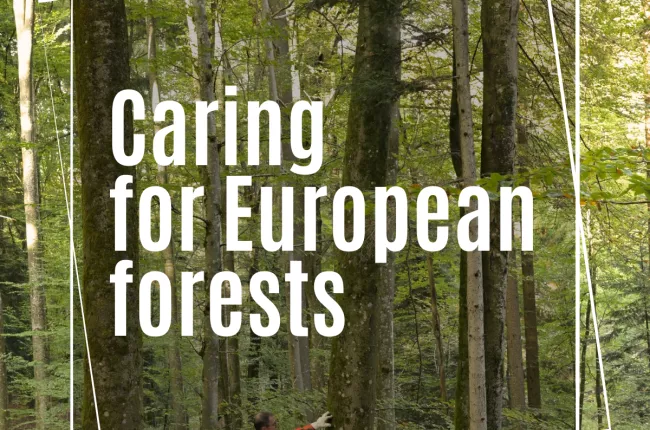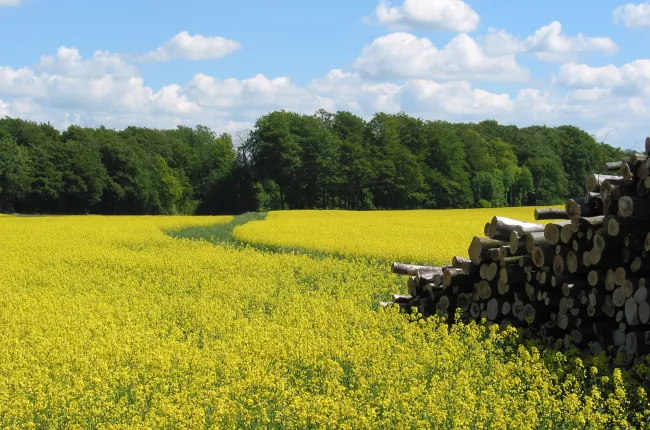The European Union’s climate policy architecture is about to reach a defining milestone with the adoption of an interim climate change mitigation target under the European Climate Law. The EU 2040 Climate Target will define the trajectory of net greenhouse gas emission reductions, including carbon removals, where the land-based sectors - with special regard to forest - play a key role.
Forest and the forest-based sectors in Europe are at the crossroads of historic decisions. In 2025, the European Union needs to deploy its policies under the Green Deal not only to meet the overarching and ambitious targets on environmental sustainability, but also to address some of the most urgent, current strategic needs of our Union, including all the three dimensions of sustainability. As the trajectory of climate change mitigation to 2040 will define the main direction EU climate policy architecture, including the LULUCF Regulation (Land Use, Land Use Change and Forestry), this time is crucial to set the directions for the EU’s strategic autonomy, self-sufficiency, and competitiveness, while also addressing the current geopolitical reality.
Over the past few decades, forest resources in Europe have expanded in terms of total area and growing stock volume but also in average stand age[1]. Furthermore, the European forest carbon sink is estimated to have increased by almost five-fold from 1950 to 1999, and was rather stable until 2013[2], thanks to the work and investment into sustainable forest management. However, today, several Member States’ inventories show that the sink has turned towards a clear decline in many countries.
Climate change-induced tree mortality and reduced forest growth combined with increased salvage harvesting are among the key reasons for the decreasing sink capacity[3]. Rising temperatures, prolonged droughts, and increased frequency of natural disturbances (e.g., pests, fires, storms) reduce forest growth and carbon sequestration rates. At the same time, aging forests reach a physiological saturation point, where net carbon uptake slows as growth declines and mortality increases.
This reflects that constantly stable and an indefinitely increasing sink cannot not be taken for granted. In this context, the 2030 LULUCF target currently established is very unlikely to be met. This highlights the need for a policy shift from a focus on increasing static forest carbon stocks to dynamic forest growth.
The forest-based bioeconomy represents a unique value chain, where the EU has high potential for strategic autonomy. Sustainably managed European forests provide renewable and circular bio-based material for a growing industry, propelled by European excellence in research, innovation and development. The carbon sequestration capacity of forests, along with their material and energetic substitution potential, depends on actively managed stands favouring high quality biomass increment. European forest owners and managers and the forest-based sectors underline that biodiversity and healthy forest ecosystems are prerequisite for a renewable and circular forest-based bioeconomy.
The challenges of our days also present opportunities: this is the time to deploy the European forest-based know-how on Sustainable Forest Management[4] to decrease our dependence on third country fossil imports and boost an economy based on the circularity of biogenic carbon. The European forest-based value chain can and should contribute to the goals of the wider EU climate policy framework, to its true potential. It must be a key part of the new EU Bioeconomy Strategy, promoting competitiveness through sustainably managed forests, covering from short to long-lived forest-based products across the forest-based value chain.
European forest-based sectors are calling for an enabling EU climate policy framework which duly considers the uncertainty of climate change impacts on forests, does not set a short-term uncertain policy targets disconnected from long-term thinking of forest management decisions, and aims deploying the potential of the forest-based bioeconomy.
Besides the consideration of the forest carbon sink, the EU climate policy framework must adopt a holistic approach and embrace the whole forest-based economy, building on the storage and substitution effect of forest-based products[5] and bioenergy. Rather than relying on increasing carbon stocks, climate policy must recognize forest growth – and more importantly, the transformation of forests into more resilient, climate-adapted ecosystems – as the fundamental lever for long-term mitigation. Achieving this requires more time and flexibility for the forestry sector than current climate targets typically allow.
The EU 2040 Climate target is a precursor for a post-2030 LULUCF framework which should work together for a thriving and decentralised forest-based bioeconomy in Europe, building on sustainably and actively managed, climate adapted forests.
________________________________________________
[1] Since 1990, as reported by Forest Europe, Europe's forests have expanded by ~9 % (~13–14 million ha), their growing stock has increased by 50% and forests have become older, with larger shares of mid-aged and mature stands. - Forest Europe (2020). State of Europe’s Forests 2020: https://foresteurope.org/publications_type/state-of-europes-forests-2020/
[2] https://efi.int/forestquestions/q16
[3] Korosuo, A., Pilli, R., Abad Viñas, R. et al. The role of forests in the EU climate policy: are we on the right track?. Carbon Balance Manage 18, 15 (2023). https://rdcu.be/erNTA
[4] https://foresteurope.org/about/ministerial-conferences/helsinki/
[5] https://www.iso.org/standard/84358.html




